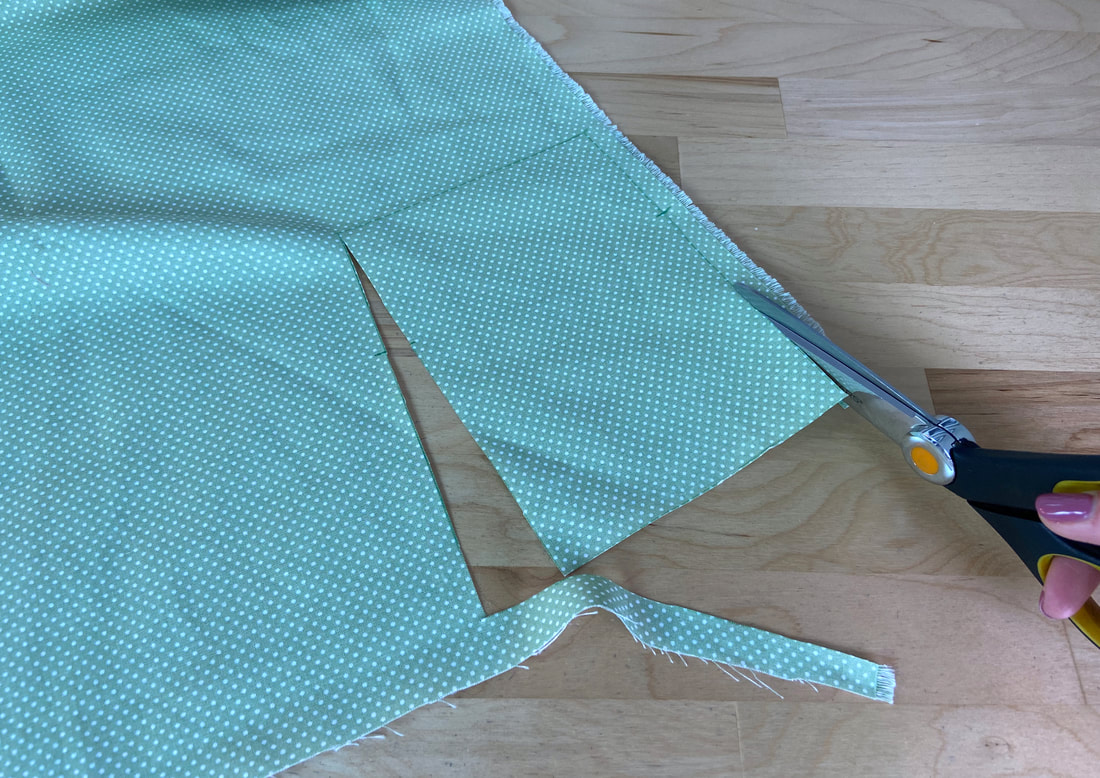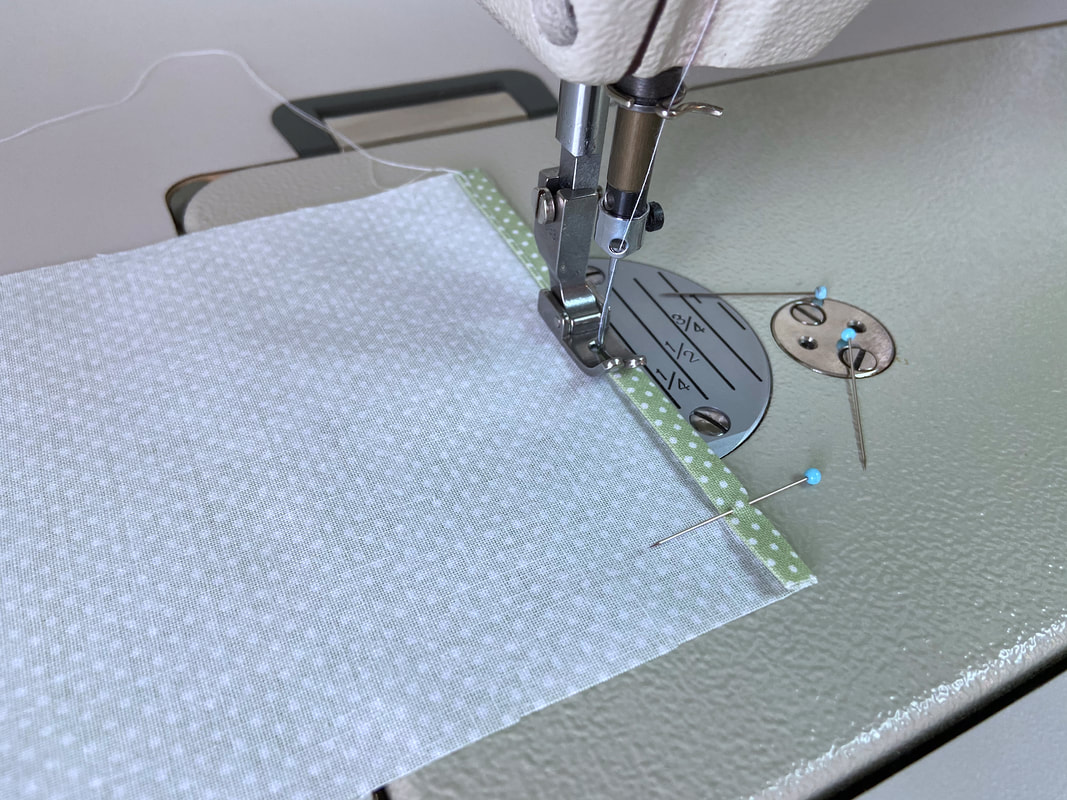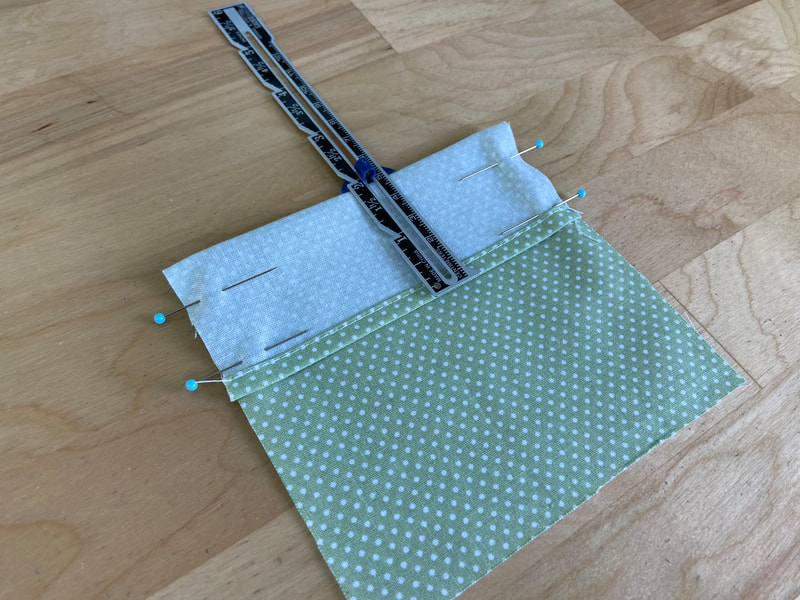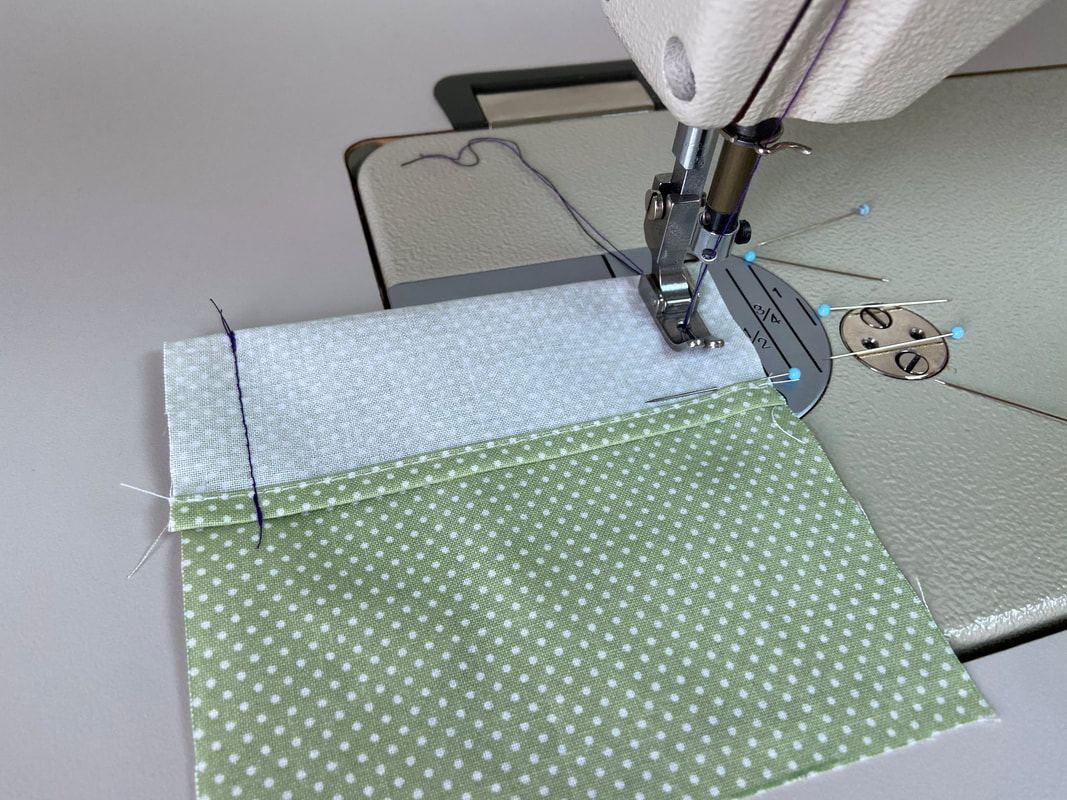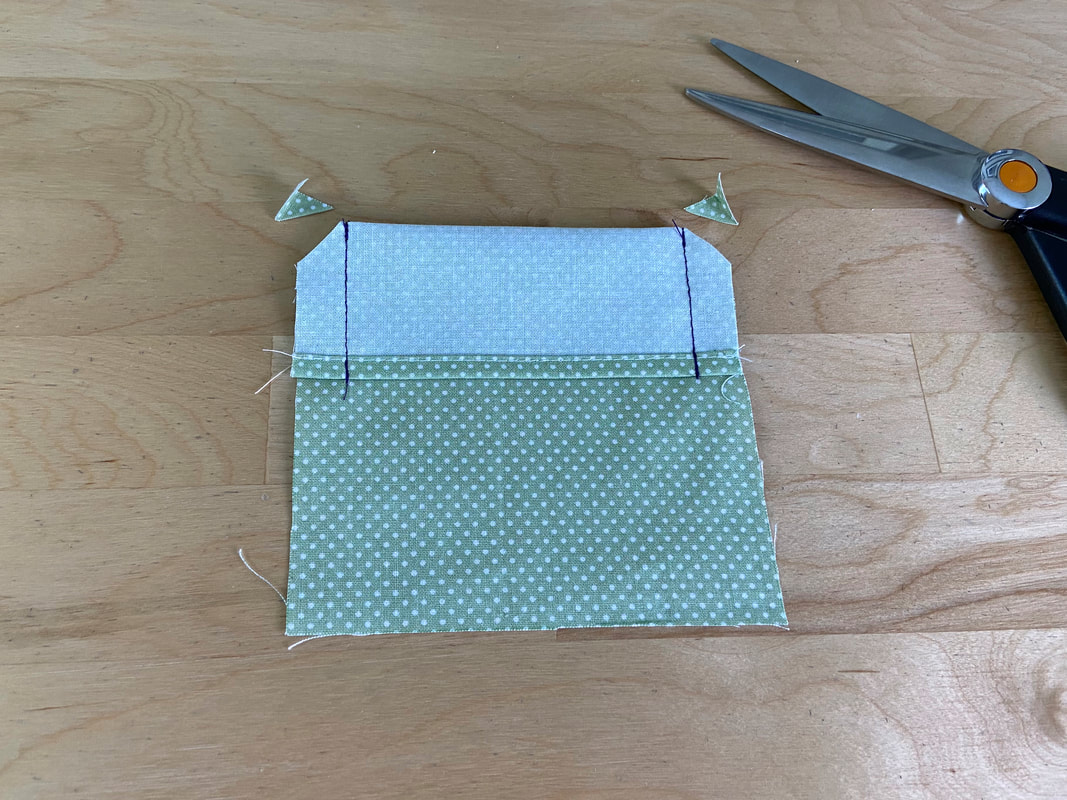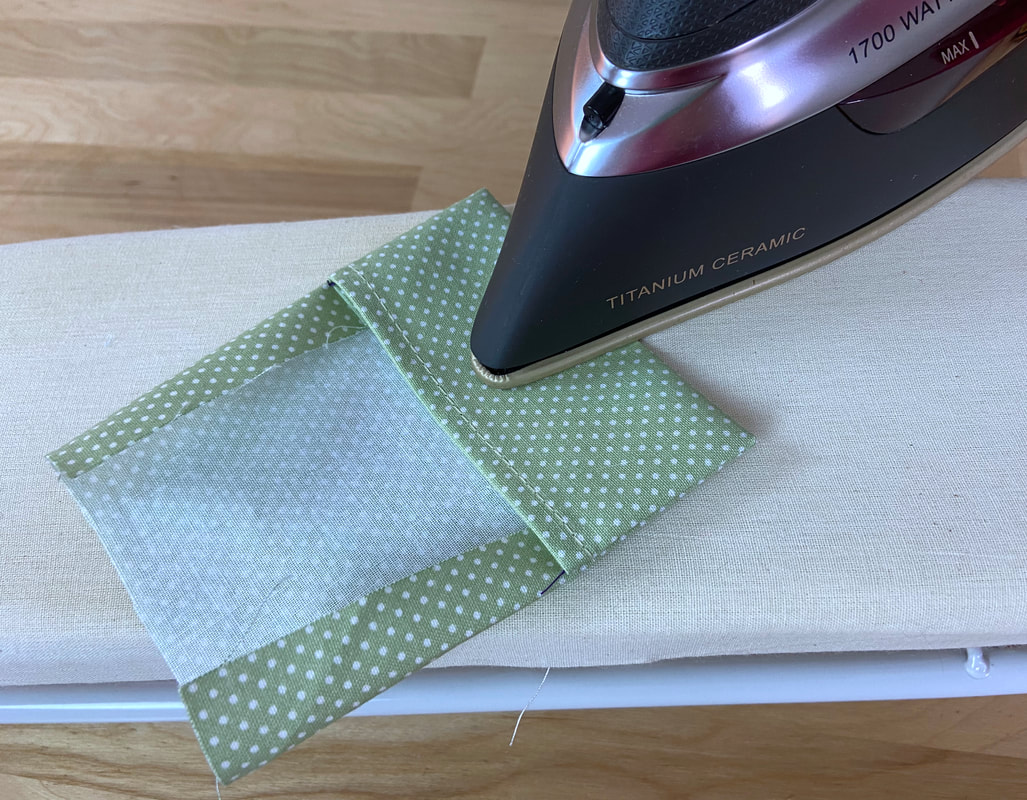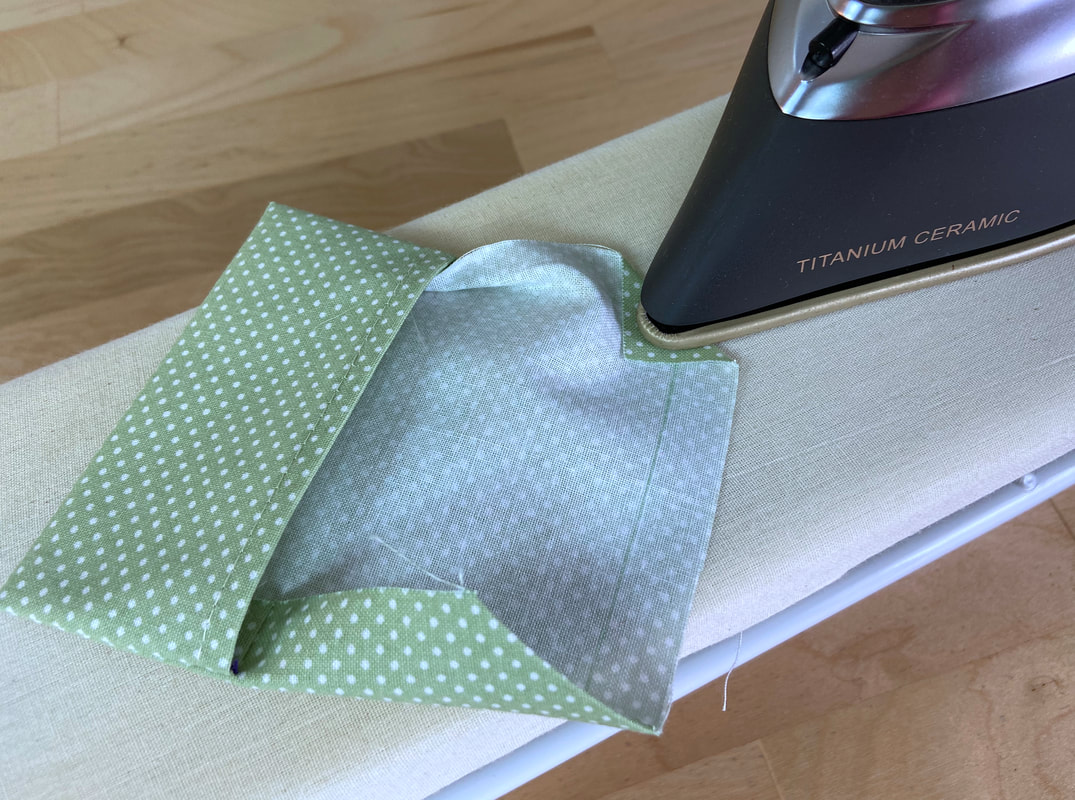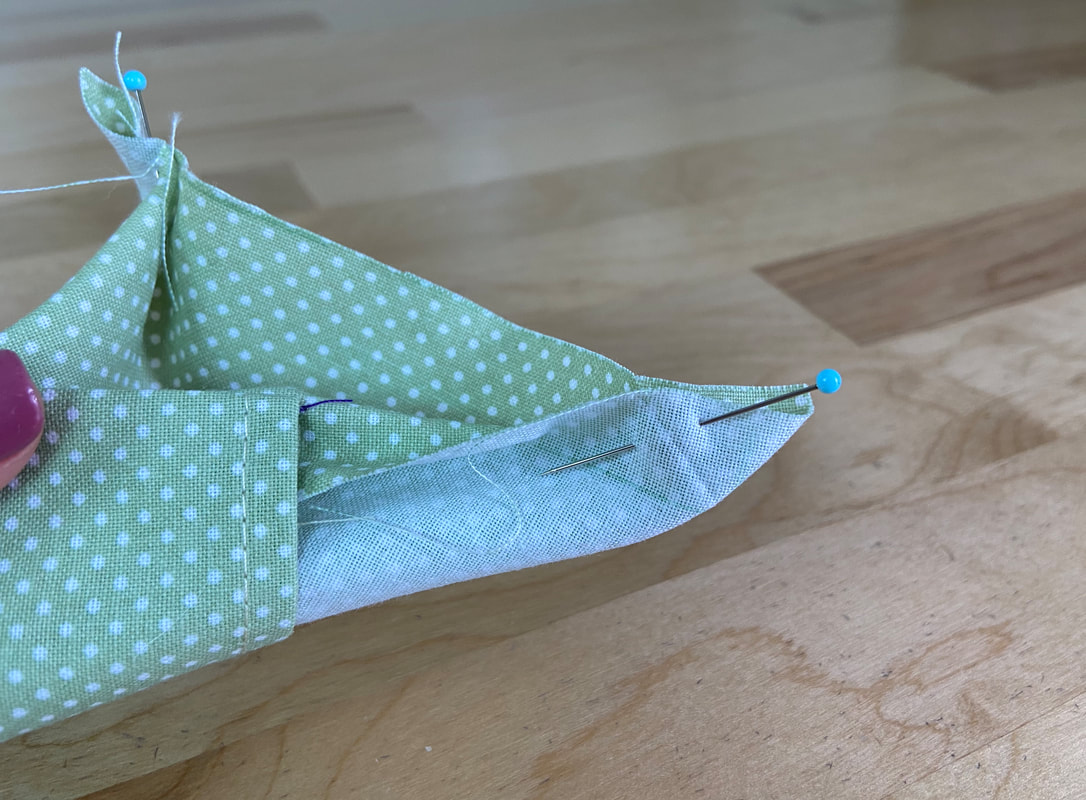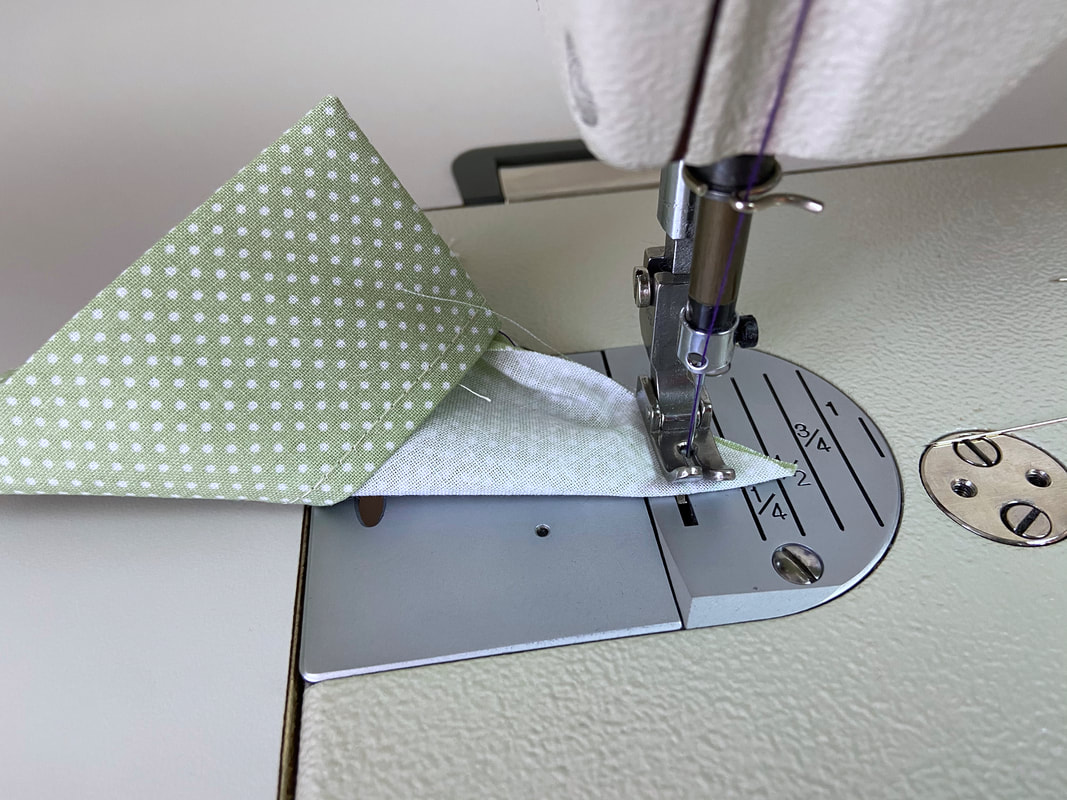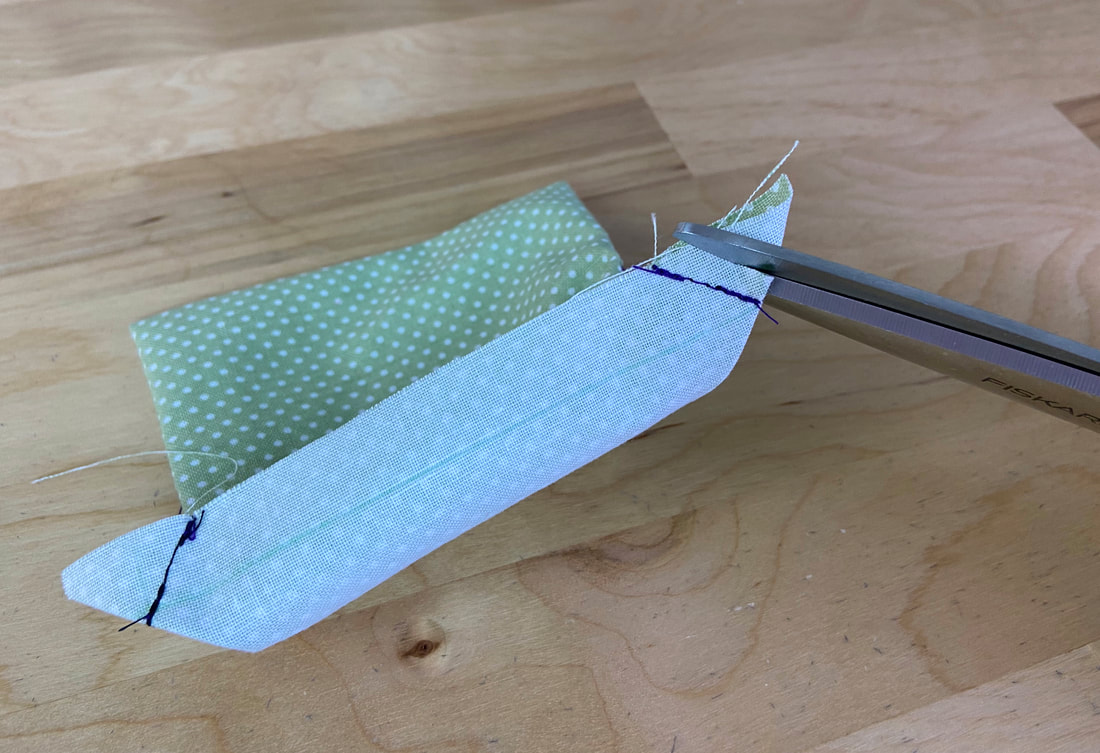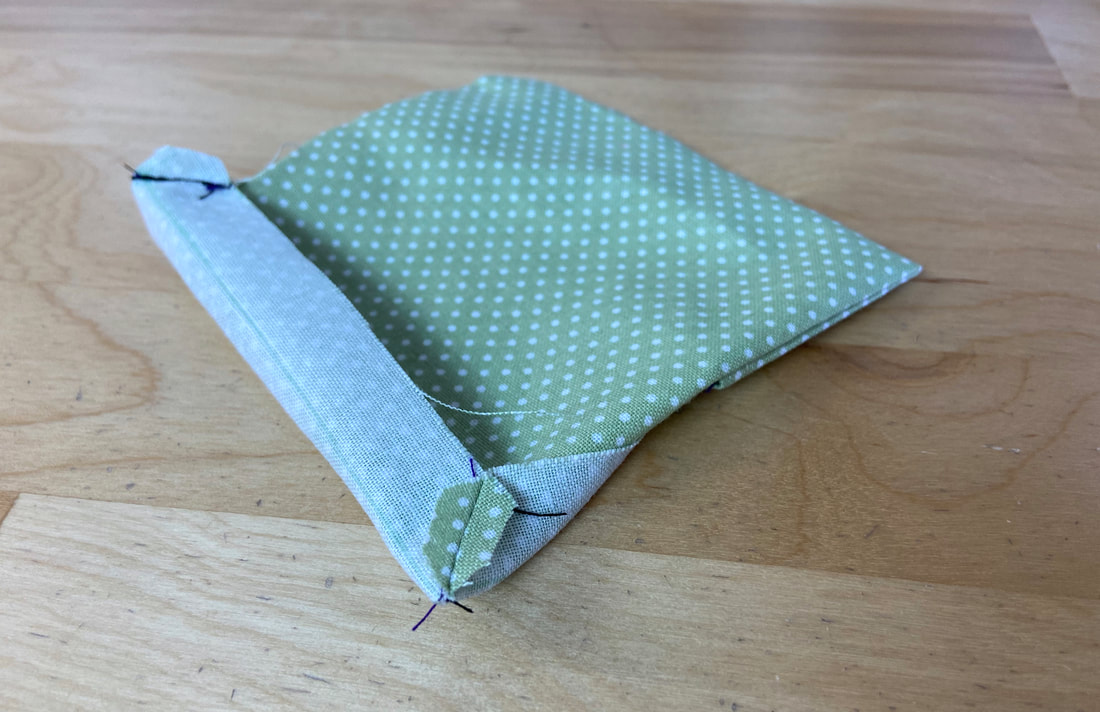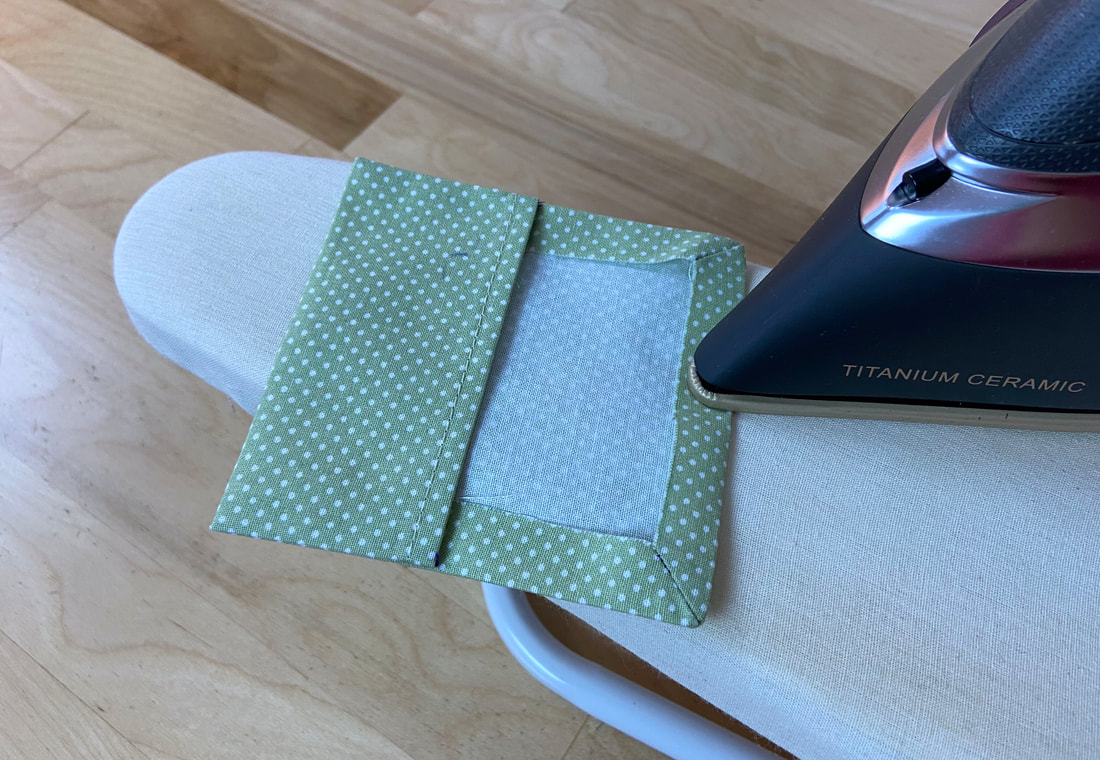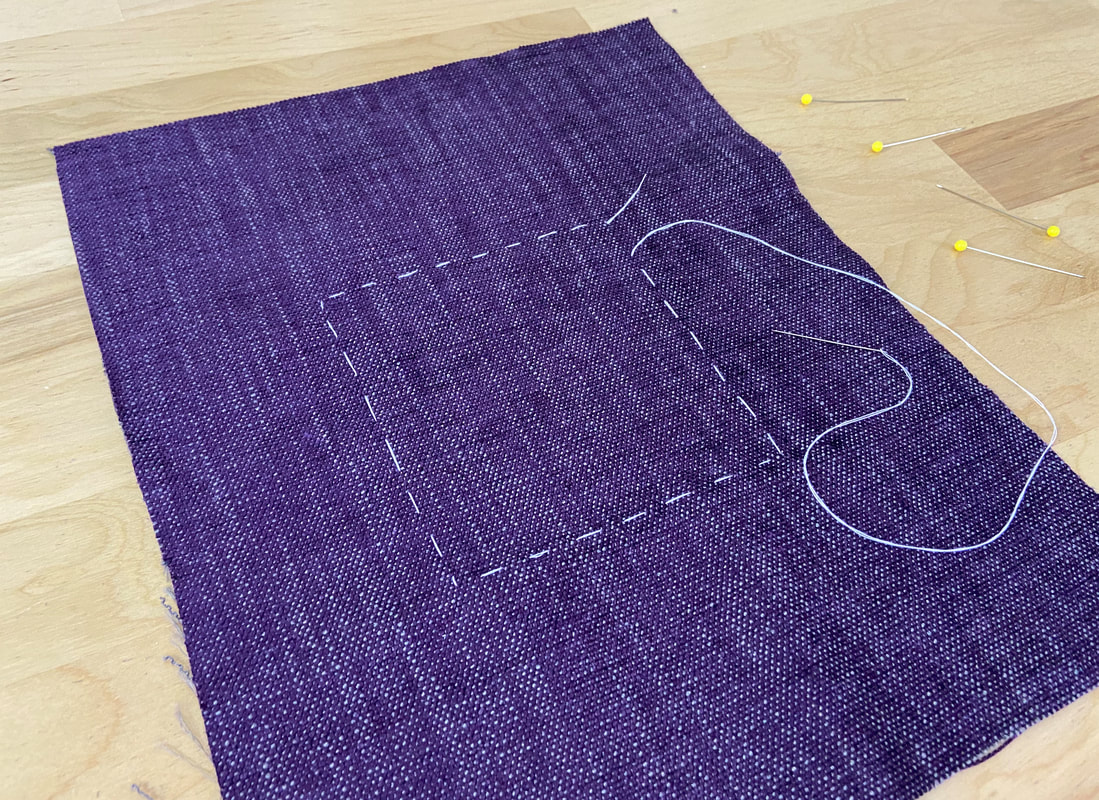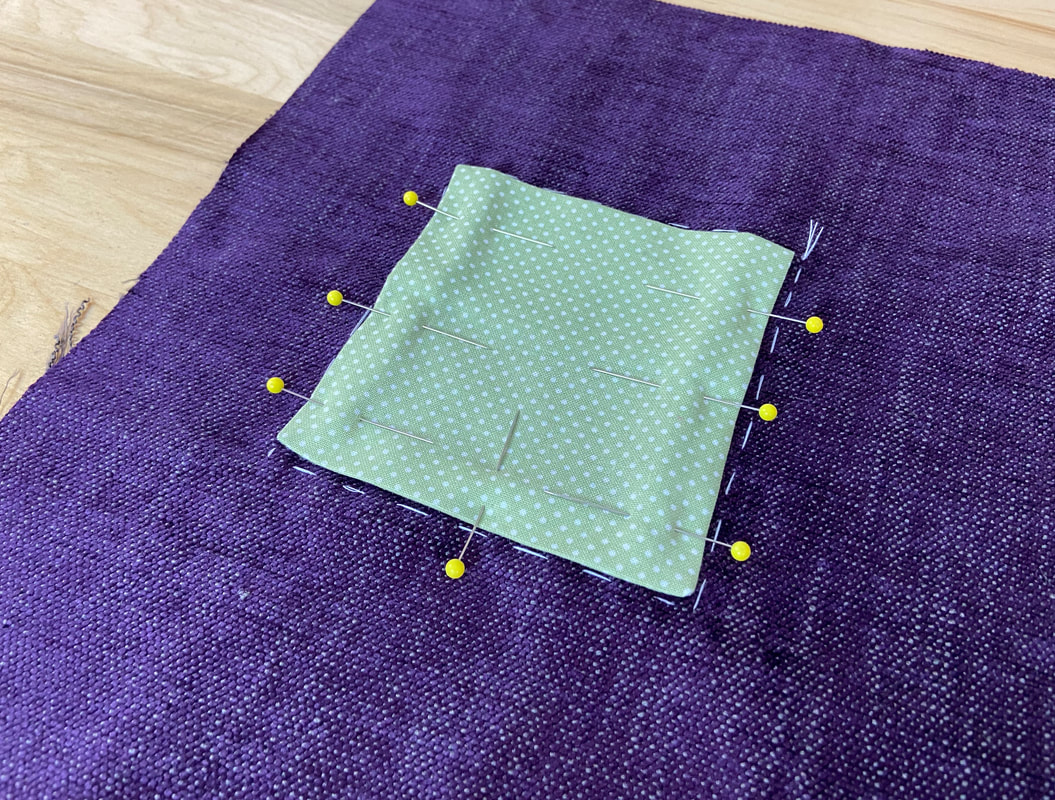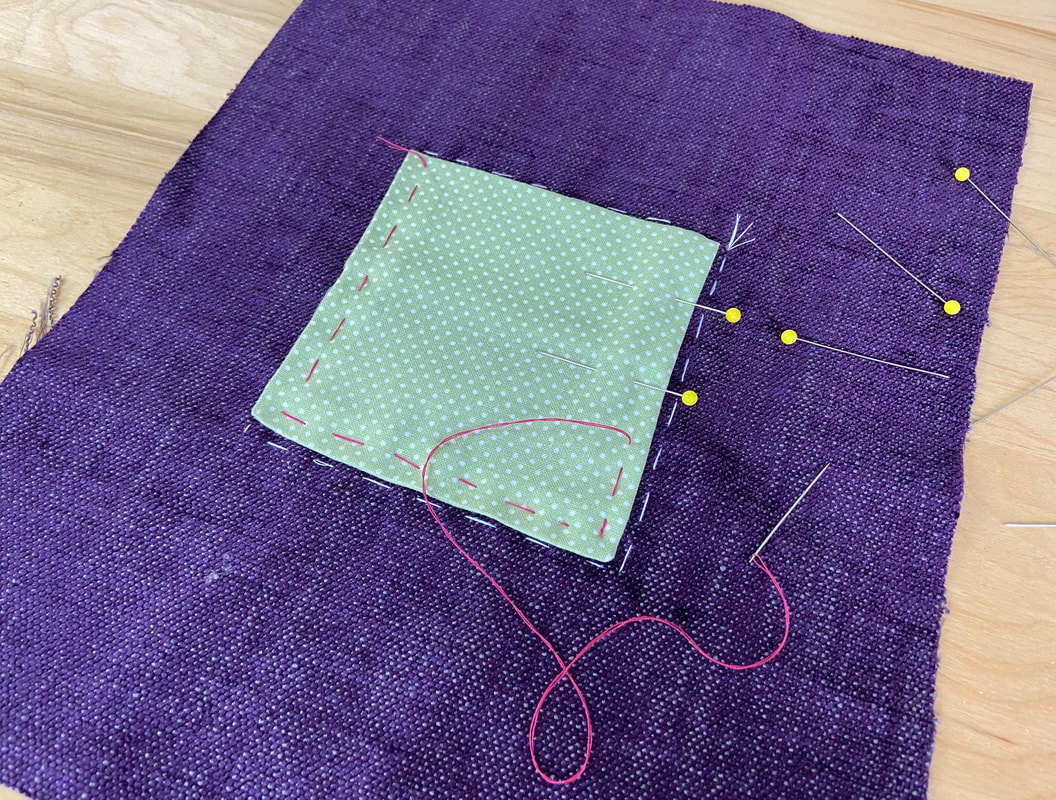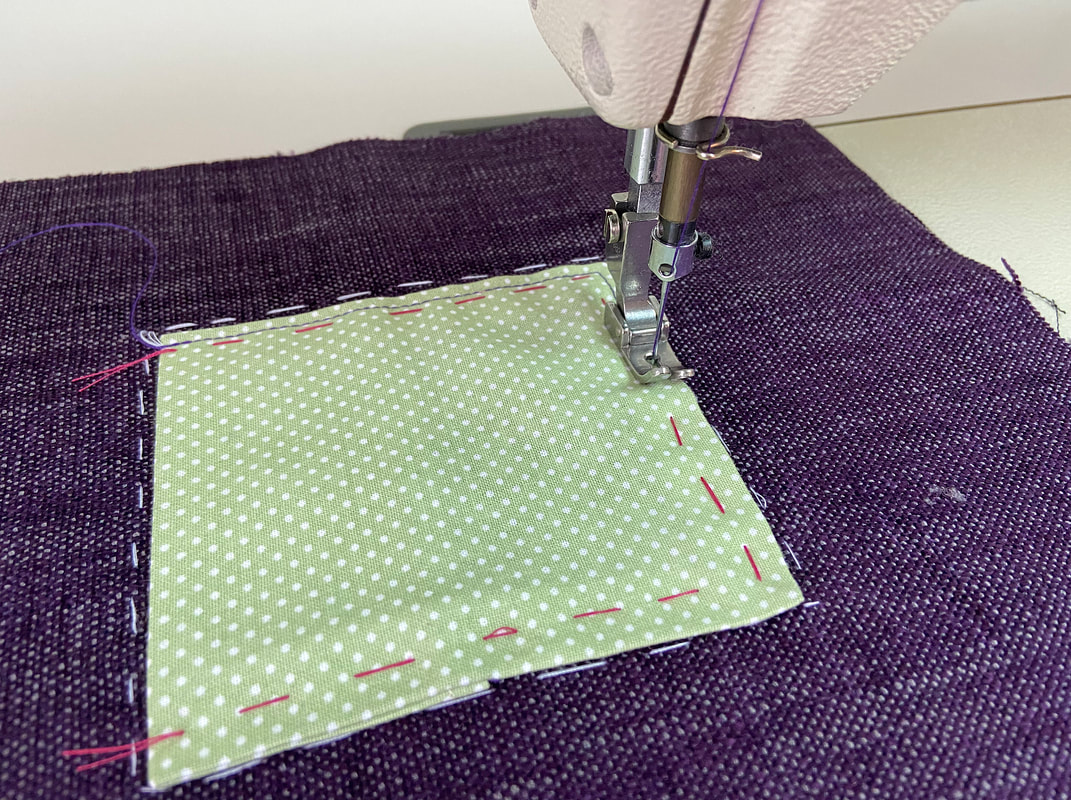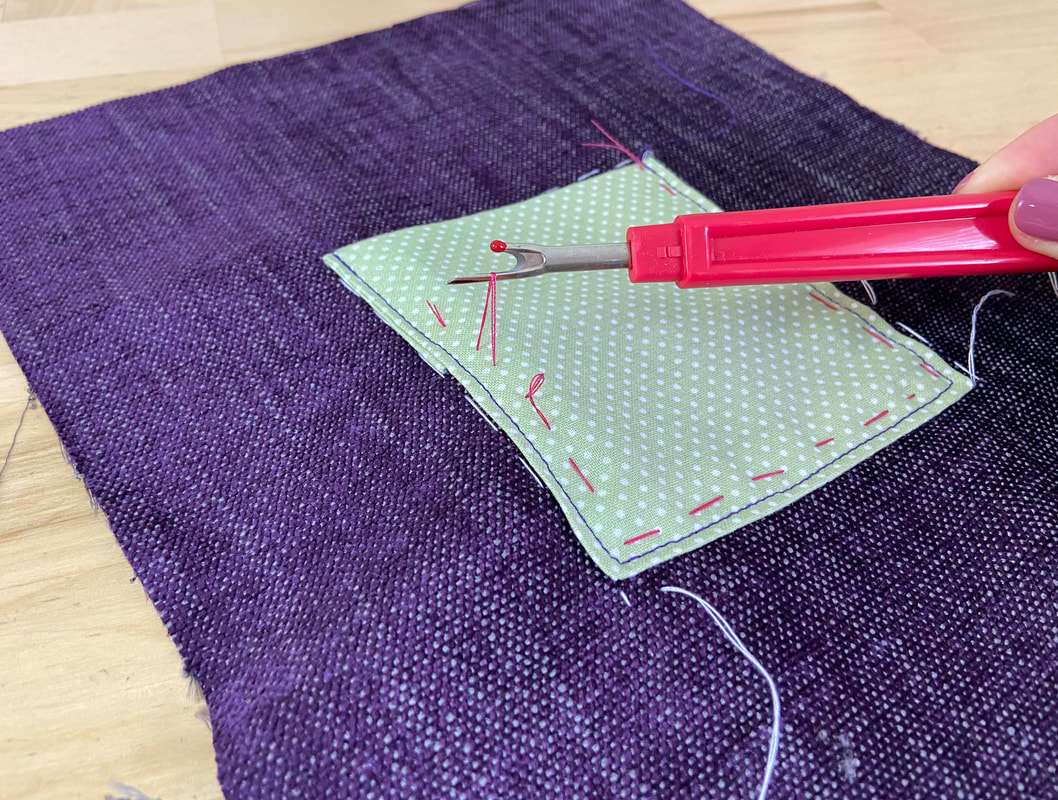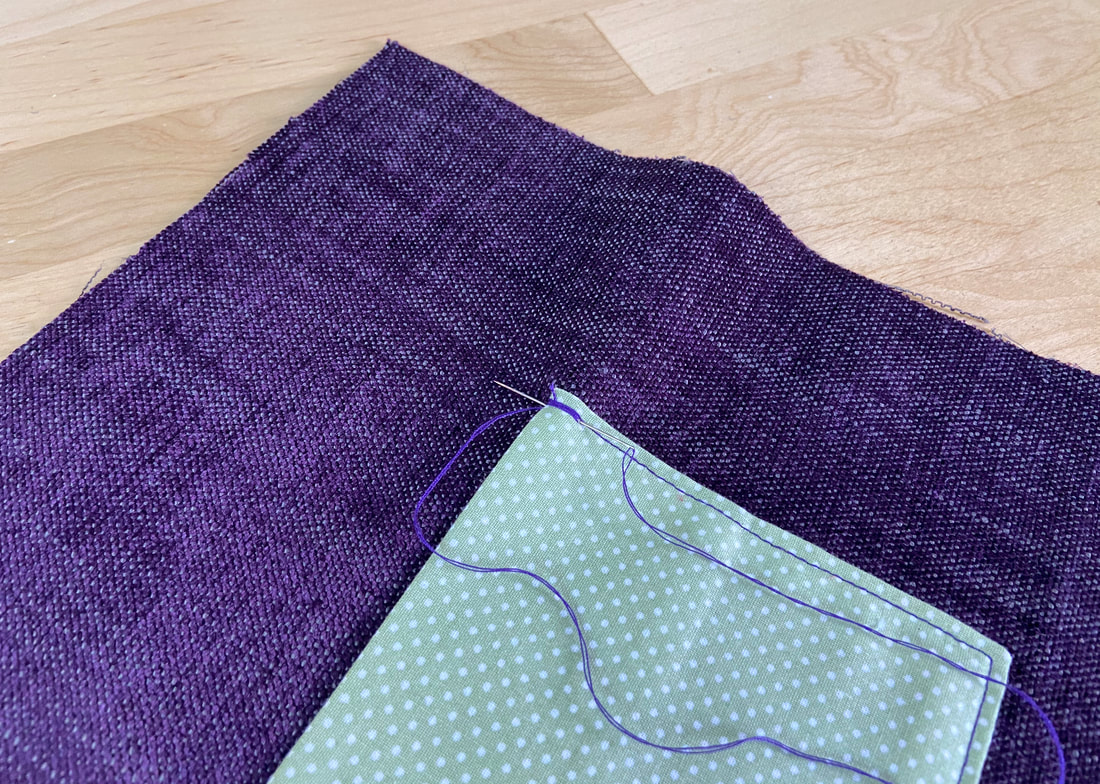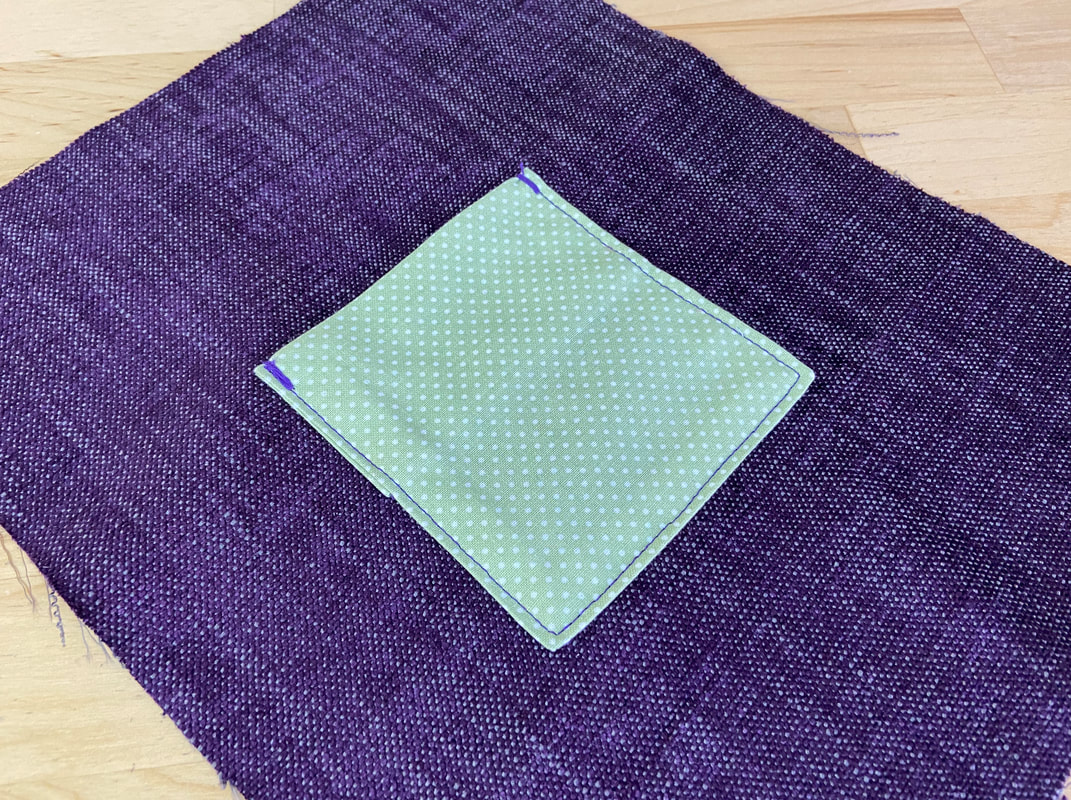Mini Tutorial: How To Sew An Unlined Square Patch Pocket
While sewing an unlined, square patch pocket is perhaps the most simple of all pocket applications, there are a few elements that may pose a bit of a challenge, especially if you are a sewing beginner.
Here is the complete process for constructing this pocket style when no sewing patterns are provided:
Here is the complete process for constructing this pocket style when no sewing patterns are provided:
1. Determine the desired pocket size. Add 1/2" seam allowance along the bottom and side edges and an extra 2"-2.5" inches to the top edge - this extra length will form a self-facing extension which will be folded to clean-finish the pocket opening edge.
Use a fabric pencil or tailor's chalk to draw the pocket's rectangular shape directly on the fabric using these final measurements. Cut the pocket piece along the marked lines.
Use a fabric pencil or tailor's chalk to draw the pocket's rectangular shape directly on the fabric using these final measurements. Cut the pocket piece along the marked lines.
2. Double fold the top raw edge toward the wrong side of the pocket. Iron and insert pins perpendicularly to secure. It helps to fold and iron each crease at a time.
Working on the pocket's wrong side, stitch the double fold using the open/inner folded edge as a guide.
Working on the pocket's wrong side, stitch the double fold using the open/inner folded edge as a guide.
3. Fold the built-in extension toward the pocket's face side and insert pins perpendicularly at each end to secure the layers together.
In this tutorial, the full extension is 2.5" tall. Since 1/2" was taken up by the double fold used to finish the extension's raw edge, the remainder extension to be folded is 2" as pictured above.
In this tutorial, the full extension is 2.5" tall. Since 1/2" was taken up by the double fold used to finish the extension's raw edge, the remainder extension to be folded is 2" as pictured above.
4. Machine stitch the extension on each side, backstitching at the beginning and end of the stitch.
5. To minimize unnecessary thickness and bulk, trim the excess seam allowance diagonally at each corner. Doing so will ensure well-defined, smooth corners along the pocket's finished edge.
6. Turn the extension on its right side and iron the resulting finished edges and corners.
7. For best results, clean-finish the square bottom corners using a mitering technique.
To start the mitering process, fold the corner seam allowance diagonally toward the wrong side of the pocket and iron this fold to crease. The finished corner point should fall directly on this folded edge. Repeat on both pocket corners.
To start the mitering process, fold the corner seam allowance diagonally toward the wrong side of the pocket and iron this fold to crease. The finished corner point should fall directly on this folded edge. Repeat on both pocket corners.
8. Fold the fabric corner with fabric face sides touching such that the pocket's bottom edge aligns with the vertical side edge, and the two portions of the diagonal crease overlap. Insert a pin perpendicularly to secure the corner fold in this position.
9. Machine stitch the corner directly on top of the diagonal crease line applied in Step 7 above. Start at the raw edges and move toward the finished pocket corner (folded edge). Backstitch (if possible) at each end for extra durability.
10. Trim the excess seam allowance at the corners about 1/4" from the stitch line.
11. Clip into the corner seam allowance and iron the layers open for a smooth, flat finish.
12. Turn the mitered corners on their face side and iron the folded pocket edges at the designated seam allowance.
The corners should look even, lay flat and well-defined. The diagonal corner seam should naturally, be located on the wrong side of the application.
The corners should look even, lay flat and well-defined. The diagonal corner seam should naturally, be located on the wrong side of the application.
13. Mark the exact pocket location on the garment surface. In this case, the pocket location is marked with a hand basting stitch. You can use tailor's chalk or a quilting pencil as long as it can be easily removed once the patch pocket is complete.
14. Align the patch pocket within the marked lines and insert pins perpendicularly along all edges except the top opening.
It may be helpful to hand baste the patch pocket in place for extra security and comfort during the topstitching process to follow. Hand basting is a great way to prevent the pocket layer from shifting askew as the fabric layers feed under the presser foot.
15. Starting at one of the pocket opening corners, backstitch then topstitch next to the pocket's folded edge, pivoting along each opposite edge until you arrive at the other pocket opening corner. Backstitch at this location to secure.
Once topstitched, remove any hand basting with a seam ripper as it is no longer needed.
16. Last but not least, it is important to reinforce each opening corner with your choice of hand-applied tack or a whipstitch (as shown above). This extra measure will extend the pocket's lifespan providing much-needed durability at the pocket opening.
The finished unlined patch pocket should be topstitched evenly along all edges. Due to the extension self-facing used in this tutorial, no topstitching is visible along the pocket's opening edge.

